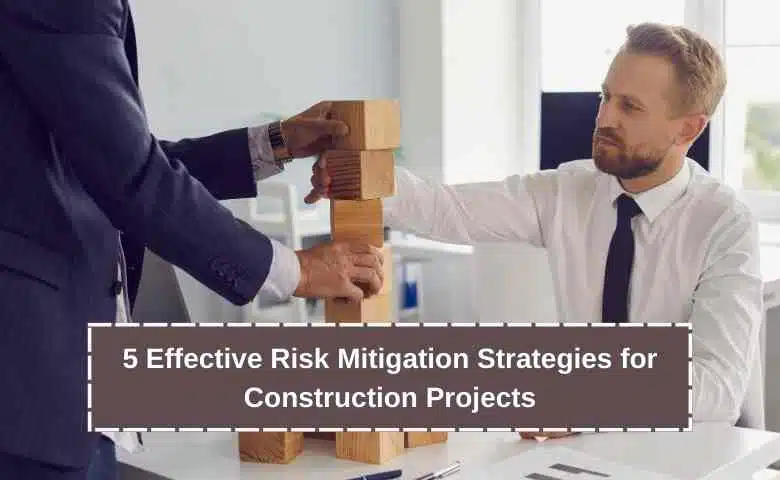Last Updated on May 8, 2024 by Admin
Managing risks in construction projects is critical to ensuring the success and timely completion of any build. Unforeseen issues such as budget overruns, scheduling delays, and compliance problems can severely impact the project’s progress. Effective risk mitigation not only helps in avoiding these pitfalls but also ensures the safety, quality, and durability of the construction. Among the tools aiding this effort is construction management software, which has become indispensable in modern construction planning and execution. Here are five strategies that leverage technology and thorough planning to mitigate risks in construction projects:
Table of Contents
Comprehensive Planning and Analysis
The initial phase of any construction project involves detailed planning and risk analysis. This stage is crucial for identifying potential risks that could impact the project. Using construction management software at this stage helps project managers to simulate different scenarios and their impacts. This software enables teams to evaluate the feasibility of timelines, budgets, and resource allocation models. Effective planning must include:
- Risk Assessment: Systematically identifying and assessing potential risks that could affect the project.
- Scenario Planning: Using software tools to visualize the outcomes of various risk scenarios, which helps in understanding the potential impact of each risk.
- Resource Allocation: Ensuring that there are enough resources and contingency measures in place should risks materialize.
Regular Communication and Documentation
Open lines of communication among all stakeholders, including contractors, subcontractors, suppliers, and clients, are vital. Construction management software excels in providing platforms that facilitate seamless communication and real-time updates. Regular meetings and updates ensure everyone is on the same page and can adapt to changes or address issues as they arise. Essential practices include:
Practice 15+ AI-generated technical and HR interview questions for Civil, BIM, QS, Planning, HSE and Construction roles. Get instant feedback, improved answers, a 7-day improvement plan, and a full PDF report. Designed exclusively for construction professionals.
One free full interview session included. No credit card required.
- Centralized Communication: Using one platform to manage all communications to avoid misinterpretations and ensure all parties have the latest information.
- Document Control: Keeping all documentation up to date and accessible reduces errors and response times to changing conditions.
Utilizing Advanced Technology
The integration of advanced technology such as Building Information Modeling (BIM) software with construction management tools can significantly reduce risks related to errors in the planning and construction phases. These technologies allow for 3D visualization of the project, which enhances accuracy in measurements, materials management, and scheduling. Key technological integrations include:
- BIM Software: Facilitates the visualization and simulation of construction designs, reducing the risk of construction errors and allowing for pre-construction revisions.
- Automated Reporting: Tools that offer real-time data collection and reporting to quickly identify and mitigate risks as they arise.
Quality Control and Compliance Checks
Implementing stringent quality control processes through every phase of the construction project helps mitigate risks related to safety and regulatory non-compliance. Construction management software provides modules for monitoring compliance with local laws and regulations, which is crucial for avoiding legal penalties and ensuring construction safety. Practices should include:
- Regular Inspections: Scheduled and random inspections by qualified inspectors using standardized checklists provided in the construction software.
- Safety Training: Continuous training sessions for all workers on the latest safety regulations and practices to reduce the likelihood of accidents.
Effective Contract Management
Contracts in construction govern the terms, conditions, and the flow of money and resources, which are all potential sources of risk. Effective contract management ensured through construction management software can help prevent disputes and ensure compliance from all parties involved. Contract management practices include:
- Clear Terms and Conditions: Drafting clear and comprehensive contracts that outline every party’s responsibilities, timelines, and penalties for non-compliance.
- Automated Contract Tracking: Using software tools to track progress and compliance to quickly address issues before they escalate into disputes.
Conclusion
Risk mitigation in construction projects requires careful planning, open communication, the integration of advanced technologies, stringent quality controls, and effective contract management. Construction management software stands out as a pivotal tool that brings all these elements together, facilitating a smoother, safer, and more efficient construction process. By implementing these strategies, construction project managers can minimize risks and pave the way for successful project completions that meet all designated timeframes and budgetary requirements. Incorporating these practices ensures that risks are not only anticipated but managed in a way that supports overall project integrity and stakeholder satisfaction.


